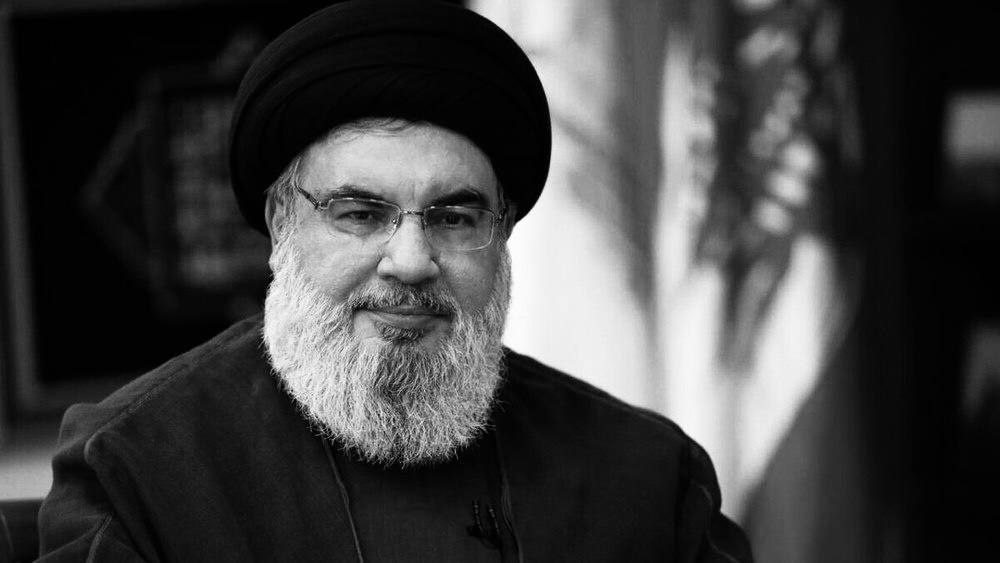The world’s eyes are on Lebanon after the martyrdom of Hezbollah leader Hassan Nasrallah and the central commanders in Israel’s attack. We continue to present the observations and evaluations of our sources in the region.
Gürkan Demir, the Iran correspondent for Türkiye’s Ulusal Kanal, shared his observations from the protests in Palestine Square of Tehran and reported on what is being discussed in Iran.
Palestinian journalist Mohammed Abu Taqiyya evaluated Israel’s attacks on Hezbollah and Lebanon in the context of Israel’s ultimate goals and the developments since the operation Al-Aqsa Flood on October 7, 2023.
Palestine Square in Tehran: “Hezbollah lives”
Gürkan Demir reported from Palestine Square in Tehran, where the Iranians gathered:
“After the martyrdom of Hassan Nasrallah, Iranians gathered in Palestine Square in Tehran. I can say that they are very furious. They are chanting slogans like “We want blood”, “We want revenge” and “Death to Israel”.
In speeches made on the podium in the square, they express their determination to continue the struggles of Qasem Soleimani, Ismail Haniyeh and Hassan Nasrallah. People are carrying Hezbollah and Palestinian flags and banners that read “Hezbollah lives”.
New air defense systems from Russia possible
When it comes to the possible steps Iran might take, the following are being discussed: providing military personnel support to the Lebanese front, increasing munitions and technical equipment, and shifting forces from the Golan Heights in Syria to the Lebanese front. In the coming period, Iran will likely strengthen coordination and logistical networks among resistance groups in different parts of the region.
Another possibility is that Israel may be subjected to a new operation similar to the “True Promise” operation on April 13, in which around 180 ballistic missiles and 300 UAVs and drones were launched. There is also talk of acquiring new air defense systems from Russia for use in Syria and Iran. Many believe that the cost of not fighting would be greater than the cost of fighting.
400 leaders on the target
Mohammed Abu Taqiyya said, “the region entered a new phase on October 7, 2023”:
“The goal behind the operation Al-Aqsa Flood on October 7 was to preempt much larger Israeli attack and occupation plans. Part of these plans involved targeting the leadership of the resistance movements. For two years, Israel and the US conducted exercises focused on a plan to assassinate at least 400 leaders in Gaza as the start of a broader offensive. This plan also included the Lebanese front. When assessing the attack on Hezbollah’s headquarters, leaders and Hassan Nasrallah, we must remember these facts.
Since October 7, Hezbollah has opened a front against Israel, forcing Israel to fight on two fronts, in both Gaza and southern Lebanon. However, Hezbollah has avoided entering a direct and full-scale war with Israel. Of course, different interpretations can be made regarding this strategy. Perhaps Hezbollah should have struck harder right after October 7 without allowing Israel to regroup and develop new attack plans.
A comprehensive embargo on Israel
It’s important to recognize that Israel’s target is not just Gaza and Palestine, but the entire region. There have been various reactions and stances from the countries in the region regarding Israel’s attacks, but now, one year after October 7, we must speak openly: none of these reactions or stances have changed the reality on the ground. Regardless of who condemns Israel, it continues its massacres. Gaza has been devastated, and now attacks on Lebanon have begun. The US is stalling everyone with diplomacy.
Immediately, a comprehensive embargo must be imposed on Israel for the sake of Gaza, Palestine, Lebanon and the entire region. A decisive stance is required, or else Israel will eventually knock on all of our doors. We will either live in disgrace or assert our will.”

















Leave a Reply